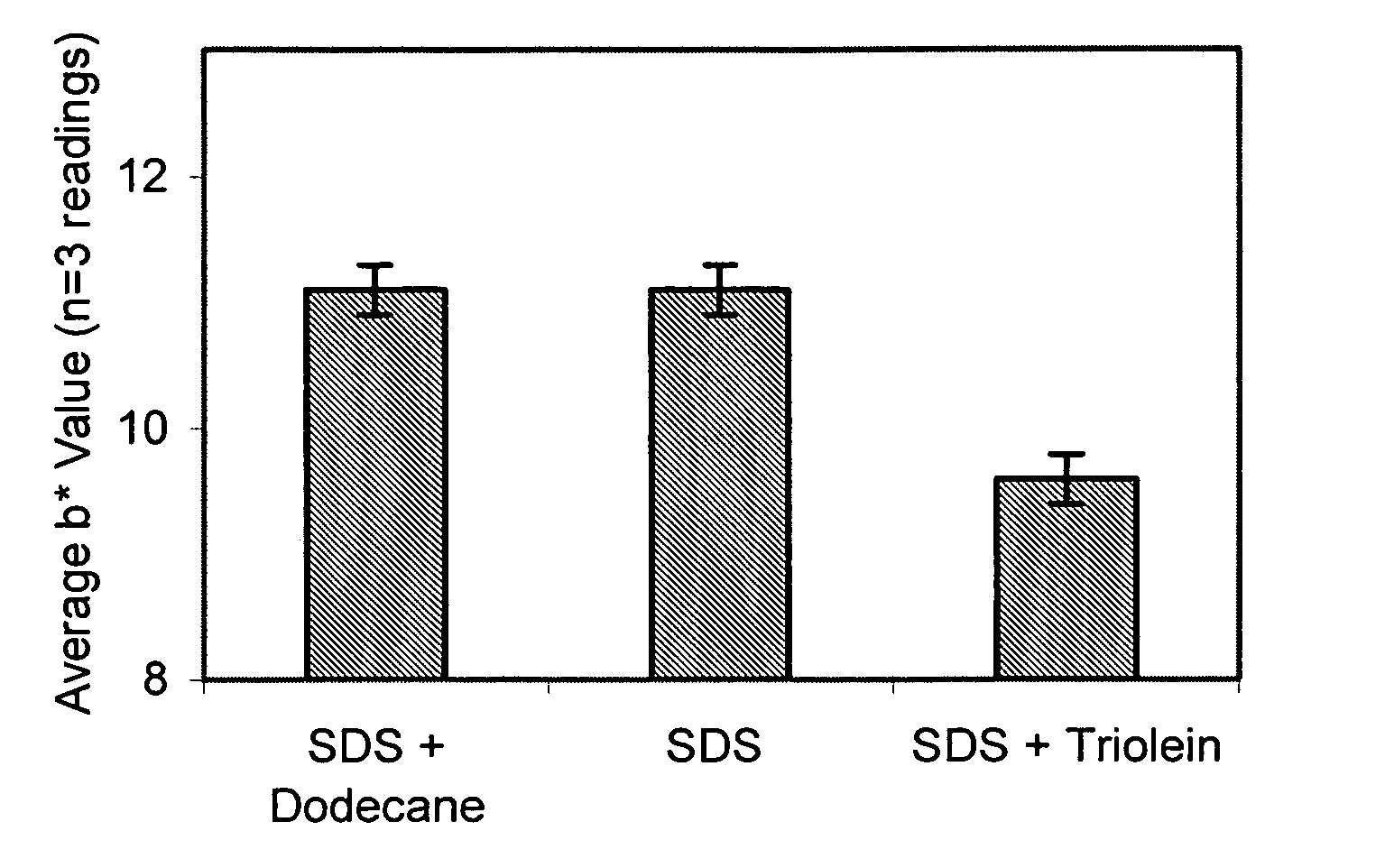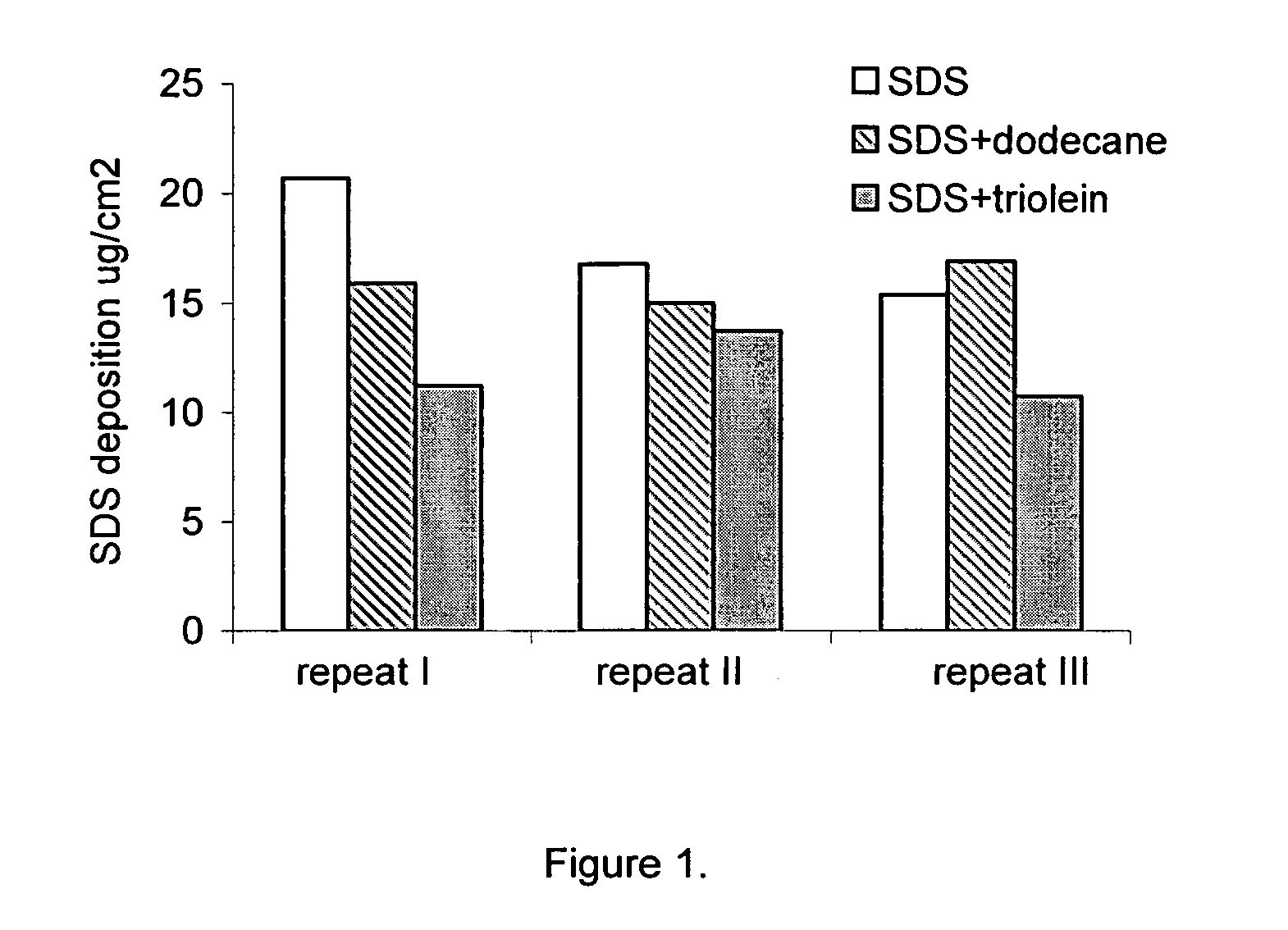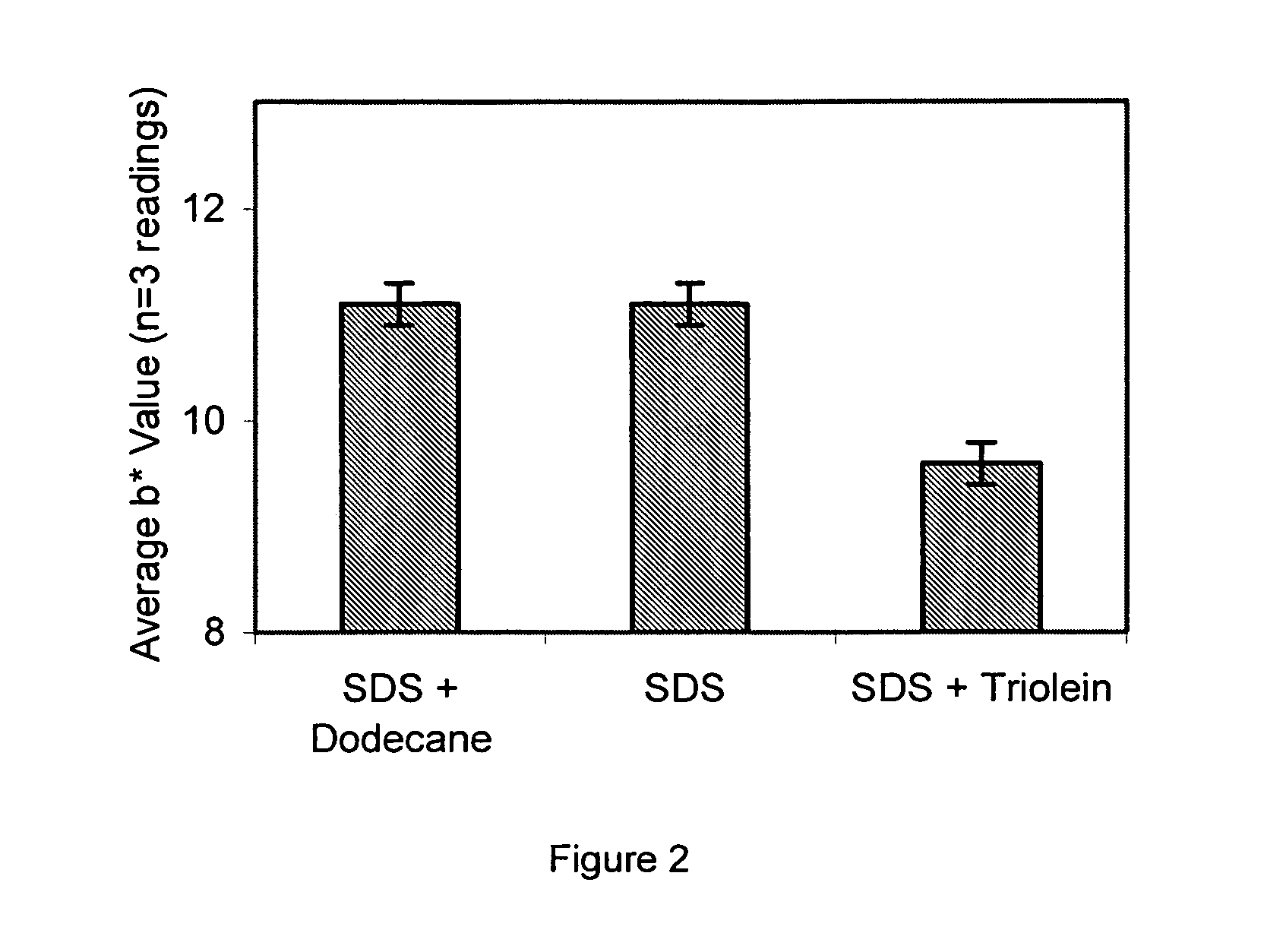Method of reducing surfactant damage using compositions comprising benefit agents of defined high polarity
a technology of benefit agents and compositions, applied in detergent compositions, liquid soaps, make-up, etc., can solve the problems of harsh surfactant/cleanser and skin damage, and achieve the effects of reducing skin damage, reducing water loss, and reducing skin dryness
- Summary
- Abstract
- Description
- Claims
- Application Information
AI Technical Summary
Benefits of technology
Problems solved by technology
Method used
Image
Examples
examples 11-16
[0083]Applicants conducted same test as in Examples 1 to 10, but used SLES / CAPB surfactant system instead of SDS. Results are set forth in Table 2
[0084]
TABLE 2Surfactant binding to BSA protein measured by conductivity: 10%SLES / CAPB (2:1) with 10% oil compared to 10% SLES / CAPB(2:1) aloneHansenSaturatedsolubilitybinding: No. ofparameter ofsurfactant peroil / cosolvent,BSA atExample(MPa1 / 2)saturation10% SLES / CAPB (2:1)Control—18310% SLES / CAPB (2:1) +1119.589510% butyl lactate10% SLES / CAPB (2:1) +1216.989710% octyl dodecanol10% SLES / CAPB (2:1) +1318.5614510% wickenol10% SLES / CAPB (2:1) +1416.8516010% cetiol DE10% SLES / CAPB (2:1) +C16.0216510% IPM10% SLES / CAPB (2:1) +D16.0219210% dodecane10% SLES / CAPB (2:1) +1523.7711010% triolein10% SLES / CAPB (2:1) +1636.4615010% glycerin
[0085]This example, similar to Examples 1-10, is showing that the effect of benefit agent(s) to reduce surfactant binding to protein is dependent on the polarity of the benefit agent: the higher the polarity, the more eff...
examples 17-18
[0087]In order to further show the protective effect of benefit agent (e.g., oil), applicants compared surfactant deposition onto skin after wash, using solvent extraction and HPLC method defined in protocol section, for 10% SDS alone and compared with 10% SDS used with dodecane; or used with triolein. Results are seen in FIG. 1 and the amount of SDS deposition on skin after wash is also listed in Table 3 below:
[0088]
TABLE 3Surfactant Deposition Onto Pig Skin after Wash Examined bySolvent Extraction After Skin Wash and HPICSDS deposition onExampleskin (μg / cm2)10% SDSControl17.610% SDS + 10% dodecane1715.910% SDS + 10% triolein1811.9
[0089]From FIG. 1 and Table 3, it was found that pig skin washed with SDS has the highest amount of SDS surfactant deposited (17.6+ / −1.2 μg / cm2); that pig skin washed with SDS+dodecane (1:1 surfactant to oil ratio) has slightly lower SDS surfactant deposition (15.9+ / −0.5 μg / cm2); while pig skin washed with SDS+ / 31 triolein (1:1 surfactant to oil ratio) ha...
example 19
[0090]Applicants again ran a test using SDS versus SDS and dodecane versus SDS and triolein and results are set forth in FIG. 2. Here test measured binding to human forearm during washing (indigo carmine staining test to skin) and 0.5% of each of the three solutions was used to test. A lower b* value indicates less surfactant binding on skin. As shown in FIG. 2, forearm washing with SDS+triolein (a polar oil) shows a lower b* value than SDS alone and SDS+dodecane (a non-polar oil), indicating less surfactant binding to skin after awash. This example once again shows that polar benefit agent (e.g., oil) reduces surfactant binding better than non-polar benefit agent.
PUM
| Property | Measurement | Unit |
|---|---|---|
| volume | aaaaa | aaaaa |
| size | aaaaa | aaaaa |
| pore size | aaaaa | aaaaa |
Abstract
Description
Claims
Application Information
 Login to View More
Login to View More - R&D
- Intellectual Property
- Life Sciences
- Materials
- Tech Scout
- Unparalleled Data Quality
- Higher Quality Content
- 60% Fewer Hallucinations
Browse by: Latest US Patents, China's latest patents, Technical Efficacy Thesaurus, Application Domain, Technology Topic, Popular Technical Reports.
© 2025 PatSnap. All rights reserved.Legal|Privacy policy|Modern Slavery Act Transparency Statement|Sitemap|About US| Contact US: help@patsnap.com



